Warning: What You Don’t Know About Food Colors
Disclosure: This post may contain affiliate links
There's one place I see artificial food colors that always catches me off guard; vegan recipes. Not only are they toxic, but they're also not vegan.
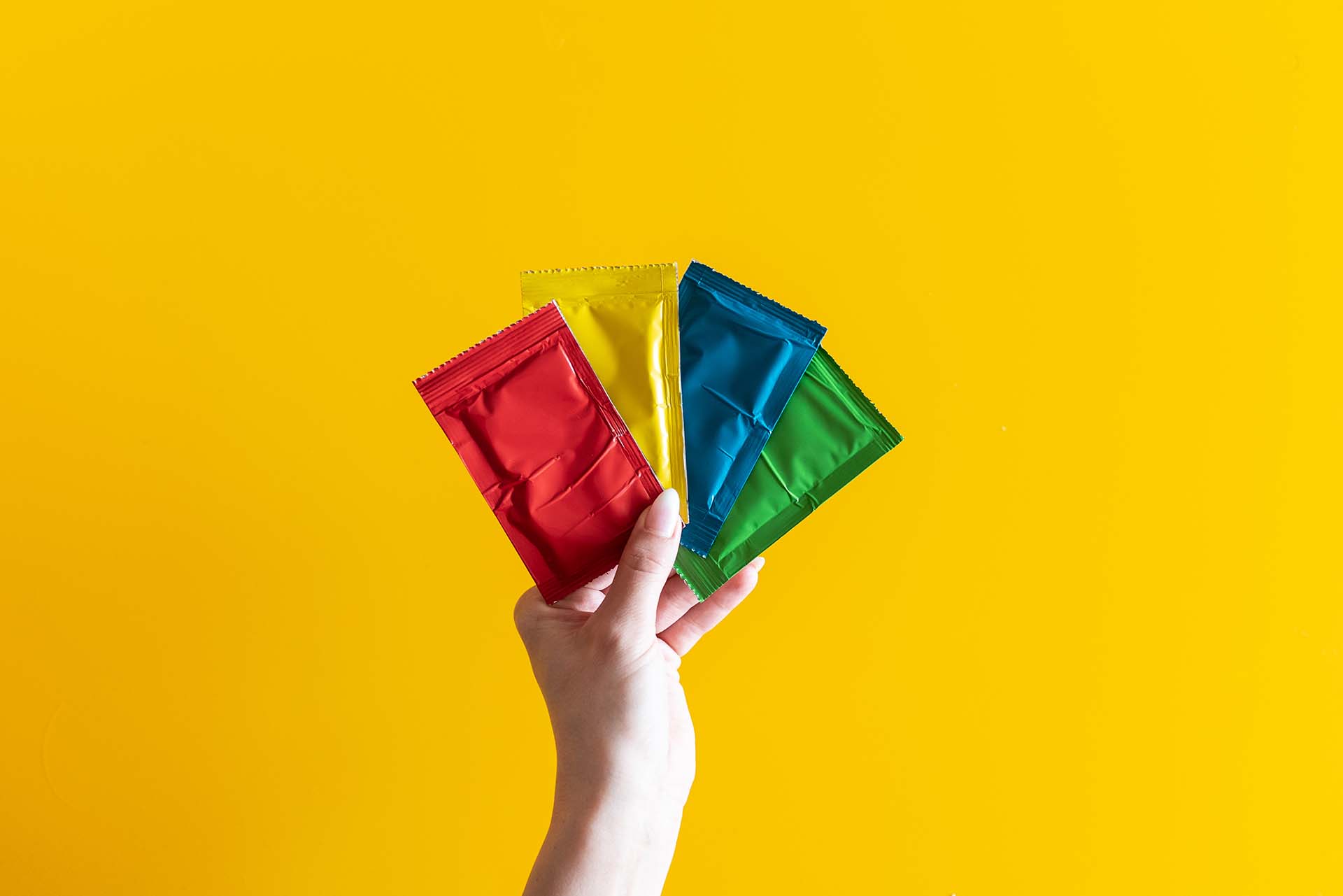
What's in this post
Artificial food colors are everywhere.
Pick up almost any food or drink at the store, and you’re likely to see something like, “FD&C Red No. 40 or FD&C Yellow No. 5” somewhere on the label.
But there is one place that I often run into artificial food colors that always catches me off guard; vegan recipes.
Not only are these chemicals toxic, but they also aren’t without cruelty.
Artificial Food Colors + the Animal Testing Connection
First of all, artificial food colors undergo animal testing.
Shocking, right?
I know; I felt the same way.
It’s not something I would have thought to check either. But, I was curious how companies make artificial food colors.
So I looked it up.
Guess what? They are a product of the wonder of chemistry and the industry of oil drilling.
Most importantly, not something I want on my vegan cupcakes. Gross.
Why Do We Need Artificial Food Colors?
Artificial colors keep food sitting in warehouses and on grocery shelves fresh and cheery looking so that we’ll buy it thinking how good and tasty it must be.
Likewise, and perhaps more insidiously, the bright rainbow colors of candy and drinks lure children with promises of a tasty delight.
These impressionable experiences can have associations that persist well into adulthood when decorating cakes and cookies.
If you need an example, look at how many websites there are devoted to perfectly decorated food, for instance.
There’s plenty.
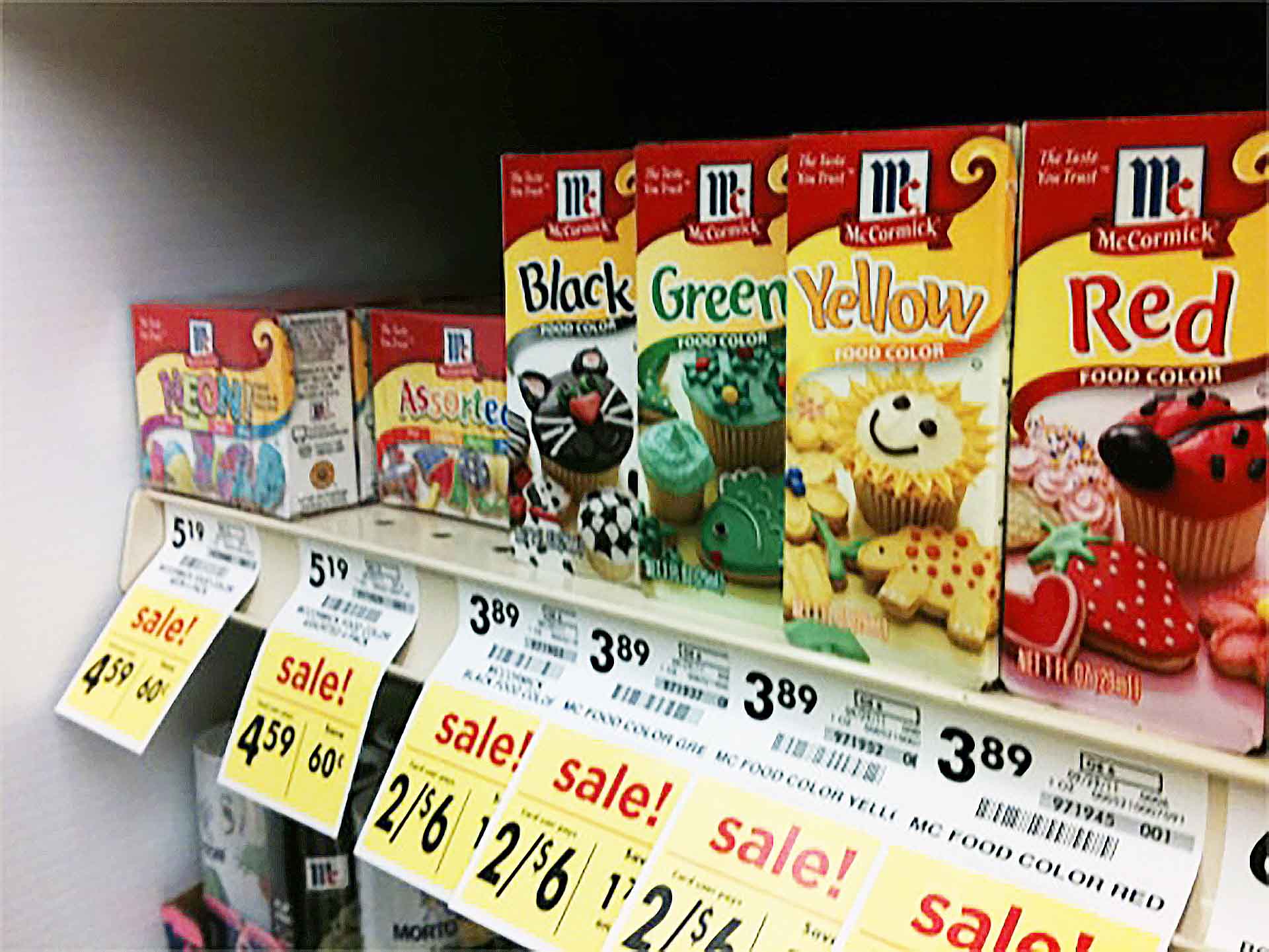
A variety of food dyes on sale at a store / Source
The Marketing of Artificial Food Colors
Have you ever noticed that the grocery stores always put artificial food colors on sale around holidays? It’s continuously advertised the many ways to incorporate these products into our diets.
I’ve seen select colors for drinks, baked goods, or even ice cubes, for goodness sake.
All in the name of “fun.”
But why? Colors don’t add flavor to our food; that is to say, they taste pretty damn bad.
Is sheer fun worth the lives of animals?
Food Additives & Animal Testing
Believe it or not, animal testing is a common way to determine the safety of these chemicals before being used as a food additive.
Frankly speaking, these tests do not indicate their effect on humans. Instead, they determine the amount needed to cause cancer and death in the animals.
Let’s take a closer look at what goes into getting bottles of artificial food colors to grocery store shelves.
#1. FD&C Blue No. 1, Brilliant Blue FCF
- Tested on animals such as mice, rats, and dogs. Beagles were fed Brilliant Blue FCF for periods up to one year to determine the maximum amount of chemical one could ingest before it caused death. (1)
- Previously banned in Austria, Belgium, Denmark, France, Germany, Greece, Italy, Norway, Spain, Sweden, and Switzerland, among others but is “certified safe” as a food additive in the European Union and the United States. It causes allergic reactions in humans, particularly in people with pre-existing conditions. (2, 3)
#2. FD&C Blue No. 2 – Indigo Carmine
- Tested on animals such as mice, rats, and dogs. “Accidental ingestion of the material may be harmful; animal experiments indicate. . .may be fatal or may produce serious damage to the health of the individual.” (4)
- Indigo Carmine is a synthetic replacement for plant-derived indigo, often used as a textile dye. It’s also used in OTC capsules and accepted for food use even though it is harmful to the eyes, skin, and respiratory tract. (5, 6)
#3. FD&C Green No. 3 – Fast Green FCF
- Tested on animals such as mice, rats, and dogs. Beagles were fed Fast Green FCF for two years to determine its effects at high-levels of ingestion. Here’s a hint, it’s many. (7, 8)
- Fast Green is also an eye, skin, and lung irritant. It even has its very own Material Safety Data Sheet complete with health advisories. A little scary, right? (9)
#4. FD&C Red No. 40 – Allura Red AC
- Tested on animals such as mice and rats. In one test, rats were impregnated and fed doses of Allura Red AC. Before the mice and rats gave birth, researchers killed the animals. Then, they performed c-sections to study the fetus’s skeletal or soft tissue remains. (11)
- Red; it’s one of the most-used artificial colors in candy. It’s been found to cause behavioral & developmental problems in children. Also, it’s a carcinogenic & mutagenic azo dye. In short, it causes cancer growth in cells. (12, 13, 14)
#5. FD&C Red No. 3 – Erythrosine
- Tested on animals such as mice and rats. “. . .studies revealed an increased incidence of thyroid follicular cell hyperplasia and adenomas in male rats that received. . .FD&C Red No.3. . .during life-time following. . .exposure.” In other words, it gave the rats tumors and initial stages of cancer. (14)
- Similarly, this azo dye is what is known as a toxic endocrine disruptor which means it destroys normal hormone function. (15, 16)
#6. FD&C Yellow No. 5 – Tartrazine
- Tested on animals such as mice and rats. From one study, “. . .rats were deprived of food, but not water, and then blood samples were collected. . .Animals were then killed. . .” (17)
- Yellow No. 5 is a human health hazard. (18, 19)
#7. FD&C Yellow No. 6 – Sunset Yellow FCF
- Tested on animals such as mice, rats, and rabbits. Researchers put Sunset Yellow in petrolatum or in water solutions studied and found. . .[it to be an] irritant to rabbit eyes. (18)
- Yet another azo dye. Consumer advocates have petitioned the government to ban it, citing studies that found they increase hyperactivity in children. (19, 20)
More Artificial Food Colors
The seven listed here aren’t the only ones out there.
Citrus Red 2 is approved for one use only in food, to color the peel of oranges.
If you ask me, that’s a pretty big vegan conundrum, considering that it, too, is tested on animals.
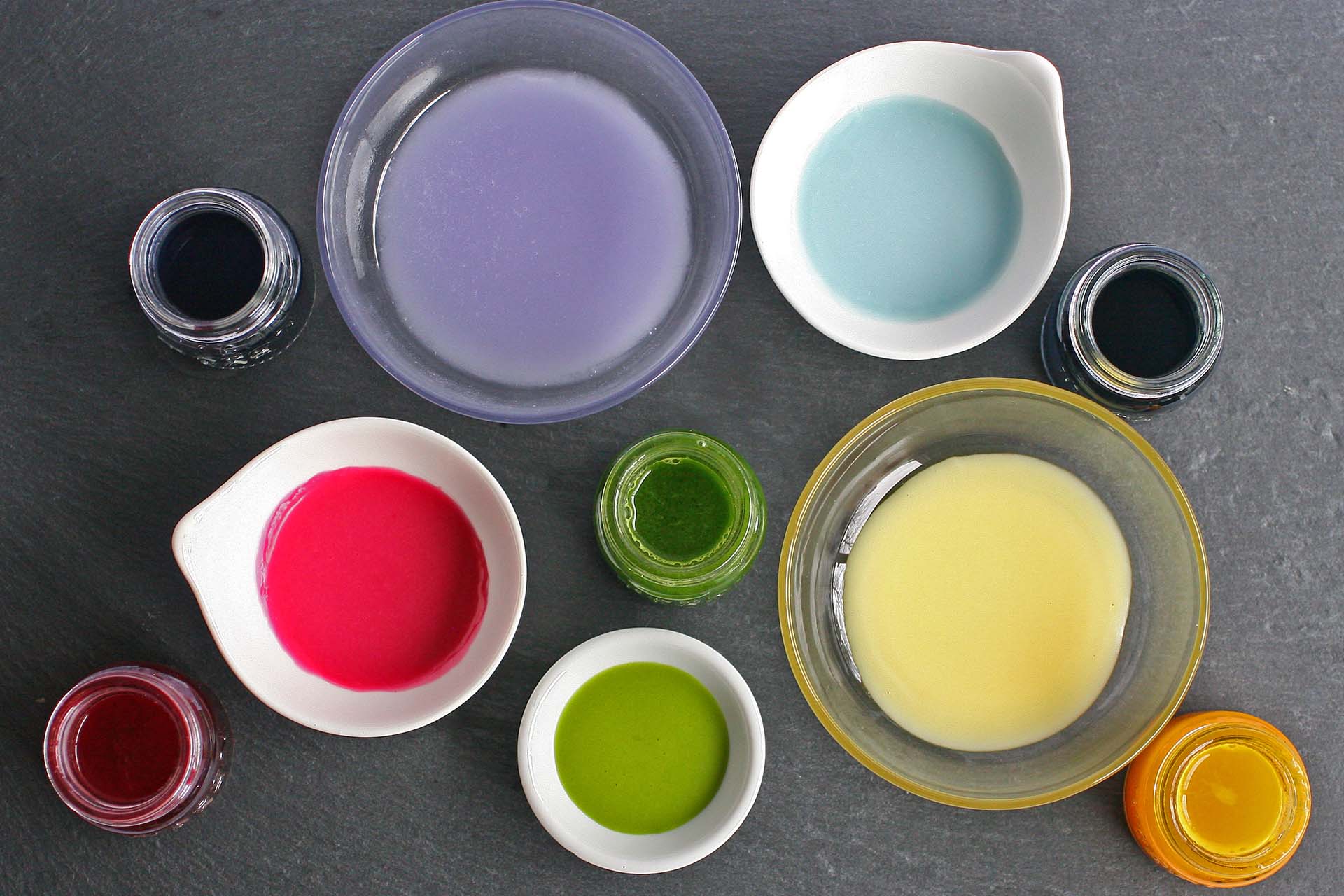
A variety of brightly colored food dyes / Source
Natural Food Color Options
So what do you do?
Start by choosing a better, plant-powered rainbow instead. Use colors made from fruits and vegetables!
Yellow, red, purple, green, and even blue! Easy to make, these colors come from everyday ingredients found in your fridge or pantry.
Trust me; it’s not complicated or expensive.
Click here for the full step-by-step homemade food coloring tutorial.
Ingredients & Colors
- Red/Pink: Beet, cherry, raspberry, pomegranate, or powdered freeze-dried strawberries
- Yellow: Powdered turmeric
- Purple: Acai, blueberry, or plum juice
- Green: Spinach or other sweet green juice
- Blue: Boiled red cabbage (use this method)
- Brown: Coffee or tea
- Orange: Mix red and yellow colors together
- Black: Swiss chard juice (use sparingly, it’s bitter)
Shop for Natural Food Colors
Would you prefer to buy natural food dyes? No problem.
Here are a few that are colored with vegetable juice or spices and contain no synthetic dyes.
Disclosure: These two options contain affiliate links I earn from qualifying purchases. See my Affiliate Policy for more details.
Color Kitchen Food Colors from Nature
I picked up a few packets to test out on my favorite sugar cookies.
I’m a fan.
First, the colors come packaged in individual packets, which means I don’t over-buy. Second, the colors mix easily and create beautiful colors. I don’t even mind that they’re more pastel than bright. Lastly, they’re budget-friendly.
Here’s a 10-pack, Color Kitchen Food Colors from Nature, that makes a good starter pack.
McCormick Nature’s Inspiration Food Colors
By far, these colors are the cheapest and the most widely available. The powdered colors come in a pack of three colors which you can mix for a variety of colors.
I bought this McCormick Nature’s Inspiration Food Colors pack when I made these unicorn sugar cookies. Just look how vivid the colors turned out!
Updates to This Article
I see some of you saying, “at some point, everything was tested on animals,” as a reason to continue eating artificial food colors.
But I think this misses the vegan point.
It’s true; as vegans, there is so much we cannot avoid. Think medications, cars, or computers, for example.
Since I can’t avoid everything, I avoid everything I can.
Rejecting unnecessary synthetic chemicals disguised as food isn’t all that hard anyway.
Final Note
To clarify, sometimes I use “chemical” when talking about artificial food colors.
Before you start to type me an angry comment about how the entire world is made up of chemicals! Water is a chemical! Chemicals are everywhere!
I hear you, I know.
My claim is not that all chemicals are inherently bad.
What I’m saying is: Artificial food colors are toxic, unnecessary chemicals that are tested on animals.
In conclusion, they can and should be avoided.
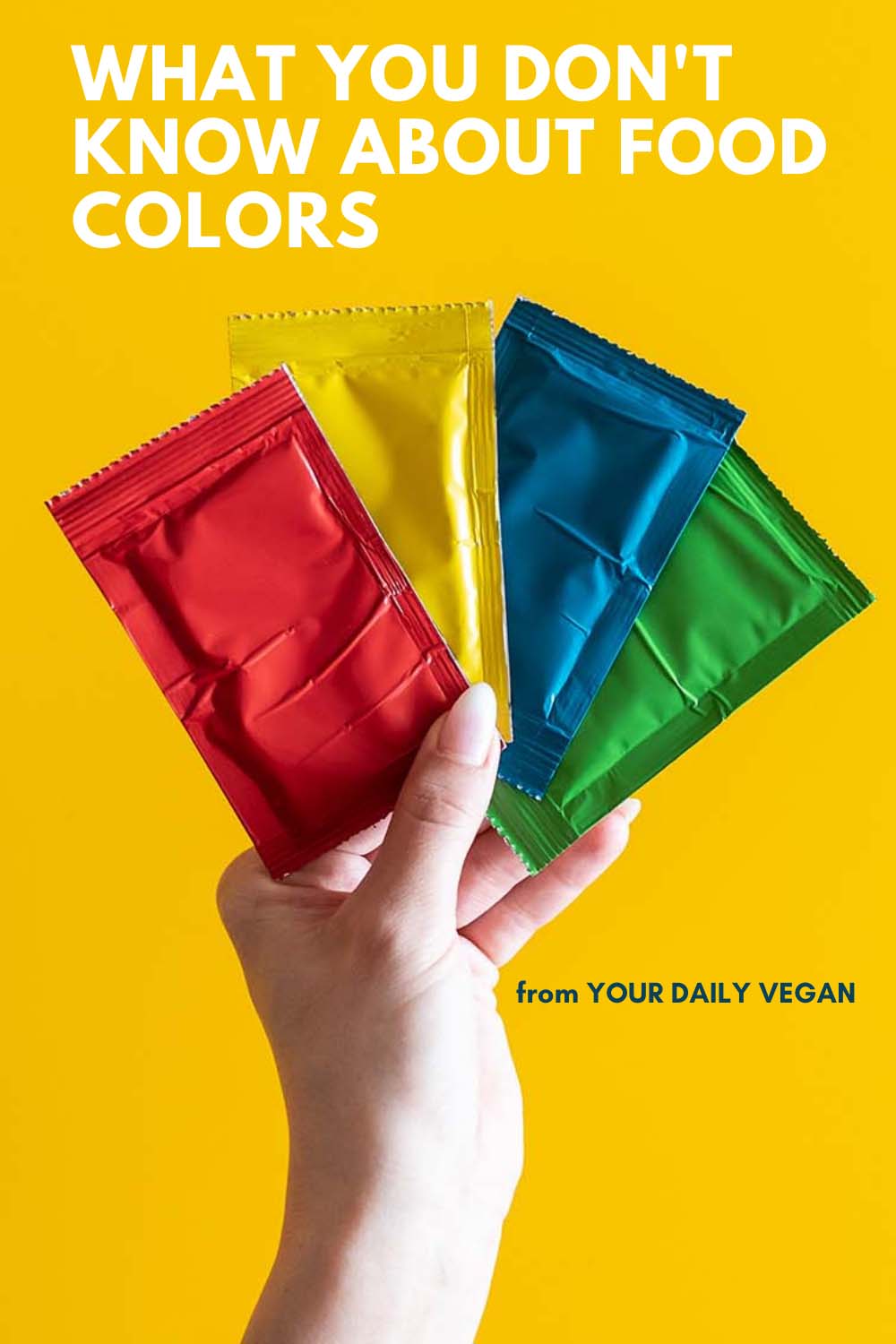
Truth in Advertising
I am committed to providing accurate information to the vegan community. Meticulously researched, the topic explored in this article contains the information available at the time of publishing.
I don’t just say it; I source it too.
Please contact me if you find incorrect data.

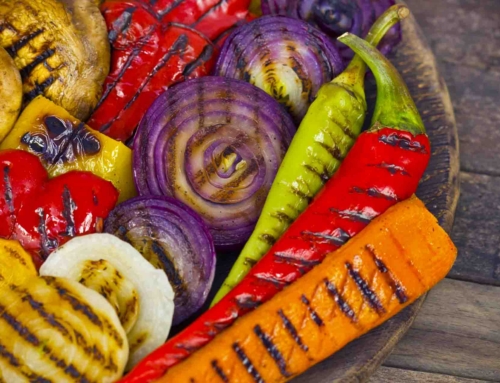
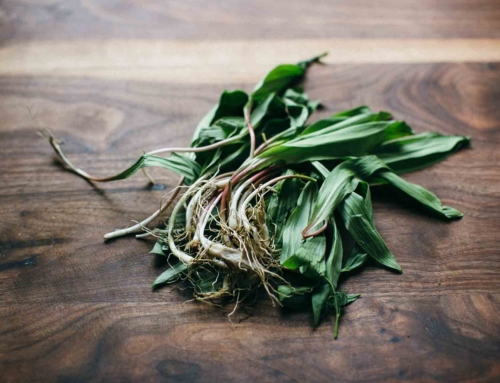
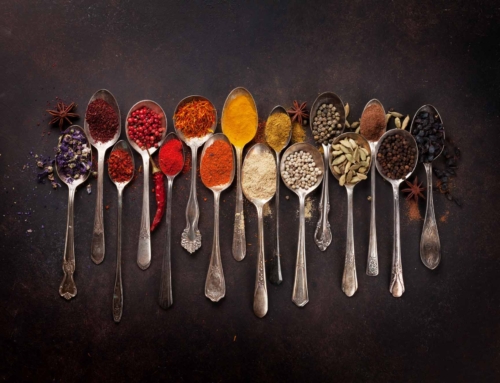


Great article, thanks for all the research you put together here. I have another idea for black food coloring, activitated charcoal works like a charm, and the one I use is made from coconuts.
None of the links to sources in this article work – they all link to a “#references” anchor on this page that doesn’t exist.
Hi! The sources are listed at the end of this article, under the header “Sources + Photo Credits.” Click the plus sign, and the section will open.
I am a professional food colorist and this article is the most ridiculous thing I have ever read. Also, whoever posted above that red 40 is made from beetles is 100% incorrect. Carmine is from the cochineal beetle, not red 40.
Every single batch of FD&C colors is sent to the FDA for testing for things like heavy metals, but animals are not used for testing. If people are testing these items on animals, it is independent researchers. Synthetic food colors are safe (and vegan) and do not have the same demand on the environment as natural colors. You can literally make an argument for anything not being vegan. Also, if you are going to make claims like these, you need to post your sources otherwise you’re going to look like every other misinformed, food fearmongering “influencer” on the net.
You’re wrong. I linked to every study that I mentioned in this article. In other words, every single claim I made in this article is sourced.
Thanks for the blue food colouring recipe! Just thought I should share that India Tree states that their sugar is bone char refined. I know not all plant-based eaters are concerned about this but as a vegan, I would definitely want to know and avoid. Their food colouring glycerin is plant-derived, as stated in the FAQs.
[…] in my Candy collage, I’ve listed the food dyes next to certain candies because these food dyes aren’t vegan. It’s a choice you need to make for yourself – where is the line for you? Remember, no […]
[…] Your Daily Vegan […]
[…] may be wondering, why did I list Food Dyes next to some of the candy? Well, that’s because these food dyes aren’t vegan, since they’re tested on animals, and, Red 40 is made out of crushed cocchineal beetles. […]
[…] such as Red #40 is made out of crushed cochineal beetles, and the others (Yellow #5, 6, Blue, etc) are tested on animals. Sad to discover, for sure – especially because Lays doesn’t have the information readily […]
I’m just wondering – when you say these dyes are ‘tested on animals’, do you mean that they once were or that the testing is ongoing? I can understand if they were tested on animals before being brought onto the market some time ago (very unfortunate but perhaps necessary with the technology of the time), but seems a bit bizarre to me that they would continually test these dyes on animals. Quite a lot of things we have today were once tested on animals to determine whether they were safe for humans, I personally think it would be very hard to avoid these without growing your own food.
It’s not really clear who funded some of these studies, but if someone has taken an ingredient and decided to test it on animals for their own research, I don’t think that makes it necessarily not vegan?
Obviously I agree dyes are wholly unnecessary but they unfortunately are in everything and I would love some more clarification on this.
Hi Lily, in the article I link to animal-based testing studies for each of the colors. You can, and should, follow those links and read the studies for yourself. I also mentioned this in the article but, some of these tests were done as little as one year ago (at the time of writing).
More and more companies are removing these dyes from their products due to more and more people avoiding them. In my own life, I avoid them and won’t purchase something if they’re on the ingredient list. What I’m saying here is that it’s possible to avoid them.
Was the most recent Yellow #5 test was in 2011 then? I’m just a bit confused, sorry.
Yellow #5 in** 2011
–
Whoops!
dont forget carmine
Carmine is a food color made from crushed beetles, it’s definitely not vegan but not in the same category as artificial so I didn’t include it here on this list.
I understand the “Tested on Animals” but when covering if Food Colorings are “Vegan” should you have at least covered what is the “Ingredients” of the food colorings? Example Chochieal / Carmine is made with Bugs. Reading many of the “Comments” shows many dont understand that Food Colorings are NOT those safe little bottles of food colorings. People who don’t think anything more how is it tested. Vagans who come to these articles are also looking to see what they are made of. I wont eat the bug one but was curious if any are made with other bugs, or from an animal. Sadly poor article does not cover more than Animal Cruelity, should have also covered if any of the “Colors” come from live beings.
Hi I have been trying to find out about red dyes also. Is it only anything labeled FD&C that’s is not vegan? I know you mentioned FD&C Red 40 not being vegan but what about when it is listed as RED 40 without the (FD&C). It might be a silly question but I would really like clarification on this if possible. The reason I am asking is because I actually emailed a cupcake company who uses RED 40 in their “vegan” cupcakes, then I thought is this vegan or not? I look forward to hearing your response thank you very much!
[…] You’re Daily Vegan: Warning: What You Don’t Know About Food Colors […]
I have a legitimate question that I find off with veganism. So one of the reasons you’re against these food colourings is because they’re tested on animals. That’s fantastic, and I agree with that reasoning. However I find it odd that vegan recipes are fine with products that contain palm oil, an industry that is decimating rainforests and causing pain and suffering to many species, pushing some closer to the brink of extinction. Why is one ok but not the other?
Excellent question! Obviously I can’t speak for every vegan but I agree that palm oil is absolutely a vegan issue and should be addressed. There are a myriad of problems with palm oil, one of which is how it’s listed on the label- there are at least 29 different names for it. Palm oil is in products such as baked goods, shampoo, cosmetics, household cleaners, laundry detergent, and even toothpaste. It’s cheaper than other vegetable oils and is even being used as a biofuel, which has helped boost the popularity of palm oil. And the spike in demand is one huge part of the problem. As you already know, demand has caused a free-for-all style approach to clearing forests to plant oil palms, forcing orangutans and other animals out of their native habitat. There are many conflicting articles on the internet on whether or not palm oil, technically a vegan product, can really even be called vegan given the overlapping ethical, environmental, and humanitarian issues surrounding its production. Deciding to consume palm oil is definitely a topic that vegans should be talking about. Any time an animal loses their life or home to a human, it becomes a vegan issue. Thank you for brining it up here, it’s incredibly relevant. This is why I mention when I talk about vegan products that I know contain it. Like vegan butter for instance -> http://bit.ly/1Kyhqrr
The answer to this question is very simple. No one knows everything. When trying to live an ethical lifestyle, we learn as we go along. I just now learned something from reading your comment. Thanks. I’ll avoid that from now on and try to spread the word. If you ever catch an ethical vegan using something you don’t think is ethical for vegans, instead of saying “why is that okay and other things aren’t?” just say, “hey did you know that product is responsible for harming the rain forests?” and spread some awareness, like an adult who understands that no one knows everything.
“Chemical-free dyes”. Are you high or just poorly educated? Everything is chemicals. You typing this article was the result of electrochemical activity in your nervous systems. You inhale O2 and exhale CO2. Chemicals! Everything is made of chemicals. Yes, naturally-occuring chemical cocktails can be preferable to artificially-occuring chemical cocktails (and they are, in this case), but everything in existence has a chemical equation. I appreciate what you’re trying to do but don’t demonize chemicals or spread misinformation that does (eg. that something can exist free of chemicals).
Yes, yes. Everything is chemicals. But this article isn’t about the chemicals in everything- it’s about the chemicals in artificial food coloring. And yes, they deserve demonizing. They’re toxic, and even if they weren’t, they’re completely unnecessary. That’s not misinformation, that’s simply a fact. No one needs brightly colored foods.
This is the reason why Peter and the rest of the family can’t stand you Meg.
Does anyone know how beauty/personal care companies are able to list their products as cruelty free and still use FD&C Lakes and Dyes? From everything I have found you can’t have both.
Nature’s Gate
I’m really glad I read this article. I knew FD&C food color is synthetic, but I didn’t know it was tested on animals.
I do have a couple questions though. I like that you gave links to your sources, but do you know if there is any companies that don’t test their artificial dyes on animals?
Lush Cosmetics claims they use 100% cruelty free ingredients & fight animal testing, but they use FD&C, d&c, or Lakes in 90% of their products. So that would mean cruelty free synthetic dyes exist, or Lush is lying. They don’t make the colorant themselves, because they advertise their ethically buying standards & know where all their ingredients come from & how they are made.
I have a bath & body business & use natural colorant in alot of my bath bombs. The color isn’t very vibrant when in dry bath bomb form, but once it is put in the water, the color is amazing, especially reds & purples(use beet root powder & beet root/spirulina powder for those colors). Those colors are hard to achieve with FD&C or Lakes.
Anyways, my point is powdered herbs & vegetables can be mixed with vegetable glycerin or food grade polysorbate 80 to make natural dyes. You don’t need alot of polysorbate or glycerin (& those are both alot thicker in consistancy than a juice is), so I think this might be a better option to use when you need to color something like frosting that you don’t want to thin out too much. I haven’t ever tried dying food, but it is just a thought.
I started out using India Tree (purchased at Whole Foods), but found it much more cost effective to make it myself (after IL sales tax it cost me $20 for 1 pack of tiny bottles in red, blue, & yellow).
My other questions is, have you ever come across any info on how Mica colorants are tested? Micas aren’t used in food, but they are in alot of cosmetics. I’m wondering if those are tested the same way as FD&C.
Thank you for your time & any help you can give with answering those questions.
All the Best,
Leanne
Hello my name is Kathryn. I’m doing a research project for my advanced health class and I was wondering if you mind mind sharing your sources :)
Hi Kathryn,
You can follow the links for the source information :) Good luck with the project!
Thank you for all your research and posting them. I have a vegan dessert business and haven’t avoided using these artificial colorants. I would not dare feed these to my clients especially to kids. Its great that you followed it up with your article on how to make natural food colorants. I have a client (a kid) now who gets sick when she eats certain foods. Her mom ordered a birthday cake with a design using A LOT of colorants and I’m so happy you wrote these 2 articles about it. I’m going to use the natural food colorants you made for their cake. Thank you very much for what you are doing. You are of great help! 😊
Thank you for this wonderful, informative post and thanks for suggesting alternatives too :)<3
Also, i would like to say that i admire you for responding with utmost respect to all of the ignorant comments made here. YOU RULE!! you a true inspiration to me
Hi R! I’m so glad you found the information helpful and useful- my job is done! :) I also really appreciate the kind words on my approach to advocacy. I truly believe in kindness first always and giving others respect. After all, veganism is about compassion and I want to be a compassionate person. I admit, it’s not always easy but it is always worth it in the end! Thanks for stopping by, reading my work, leaving a comment, and brightening my day! Oh! I wrote a new post about food colors recently that might also interest you, here’s the link in case you want to check it out -> https://www.yourdailyvegan.com/2016/03/homemade-vegan-food-coloring/
[…] Light original with Flax after finding this post and the almond milk from the cupcake recipe What You Don’t Know About Food Colors Provides a handy chart for vegan food […]
Sorry, but the fact that the government has tested them on animals doesn’t make them not vegan (apart, obviously, from cochineal). You would be hard pressed to find a consumable substance that hasn’t been tested on animals. And just because something is artificial, “chemical” (even WATER is a chemical) or a fossil fuel byproduct does not inherently make it bad, dangerous, or not vegan. Are they necessary? No, but necessity is hardly something to base an argument on.
Hi M, thanks for stopping by to leave a comment. I’m not saying all chemicals are bad, I’m saying these synthetic ones that are tested on animals are toxic to human health and are unnecessary and can be avoided by simply making your own from plants. By your logic we shouldn’t care whether anything is tested on animals- which is absurd especially since no one needs brightly colored food to survive. Changing abhorrent common practices done to animals is a vegan issue and shouldn’t be dismissed because “we’d be hard pressed to find a substance that hasn’t been tested on animals” – that’s kind of the point. We already know that feeding beagles brilliant blue artificial food dye causes cancer and death- we don’t need any more tests to prove it again. If people didn’t care about unnecessary animal testing there wouldn’t be campaigns for cruelty-free health and beauty products. People care. I care. Further, I use the words “synthetic chemicals” (which they are) most and cruelty-free (which they aren’t) not as an argument for or against chemicals in general. I do realize that not all chemicals are bad (water for instance). Finally, saying something is dangerous, unnecessary, and tested on animals (your words) is exactly my point. These colors are completely and utterly unnecessary *and* cause the pain and suffering of others. Why would anyone who knows that disagree with a campaign to promote educating others about cheap alternatives that don’t cause the same suffering? That’s what I’m basing my argument on- unnecessary pain and suffering backed up with solid research. I disagree with you that necessity doesn’t matter- it absolutely does when we are talking about the life and death of others.
Azo dyes in food go deeper than you know. How do I know? I developed a severe azo dye allergy so I’m a human test subject. I tried using turmeric to dye fabric. Reacted to it. I have no food allergies. A lot of digging later…turmeric, even the beautiful organic turmeric I bought, is often adulterated with dyes. Azo dyes. Metanil yellow, which is banned, and others, like tartrazine. I also used the common route of tea dye. Reacted to that too! Come to find, tea is often dyes with….coal tar based azo dyes. Which explains why, after a lifetime of drinking tea, it began irritating my mouth the same time as the azo allergy went over the top. Same goes for the curry I cooked with the same turmeric I used to dye the clothes I had such a severe reaction to. I am lacto-ovo vegetarian, which has no bearing on what I write or on your issue here-animal testing. My issue is unlabelled chemicals in food, and adulterated food. So advising use of turmeric and tea is not a good idea. I use only whole, natural things to dye, never processed food or spices.
Hi Wendy, thank you so much for the comment. You’re right, I had no idea that tumeric was colored by an azo dye- I’ll do some research into that. If you don’t mind sharing, what do you use for natural dyes?
Not ALL turmeric is adulterated with dye, however, the ones I tried were, both organic in bulk, and packaged brand name. Getting a whole root is one solution I haven’t done yet. I only use substantive dye materials, which don’t require added chemical mordants. As an amateur, that’s pretty restrictive. Black walnut is the best. I have used both shells and better, outer husks. Have also used sumac, with added iron in the pot, which always darkens and gives a greyish hue to any natural dye material. Make sure to strain the boiled stuff before using. Next I’m trying onion skins, which I have read are substantive. I am also getting used to wearing off-white!. I also use colorgrown cotton and alpaca yarn to make things. Alpaca is a much kinder fibre than sheep’s wool. Sourcing all these things-as locally as possible- has been a lot of looking and testing but very nice in the end.
i know right
Wow, what a lot of crap!. Your knowledge is very limited. According to you everything is bad. Hate to tell you, but when you were born all the medical stuff that was used to bring you into this world was probably tested on animals. Perhaps you’d prefer to test them on yourself instead???
Not all naturals are good for you…Poison Ivy is natural, your poop is natural, arsenic is natural!
Anything we ingest or apply to our skin or body should and is tested at one time to make sure it doesn’t hurt you.
There are those who have deadly diseases like Cancer, AIDS, etc., research is working hard to save the lives of these people and all humanity….yes, they use animals sometimes, but the results outweighs the sacrifice.
If your son, daughter, mother, father was dying of a disease and you had the opportunity to save their life, but the drug was tested on animals….what would you do….(a) let them die; (b) administer the drug to save their life?…..hmmmmmm, let me think!!!!
Hey TSB, thanks for stopping by. If you feel that I haven’t researched these issues enough, you may check any of my links to see where I obtained the information in this article. I’m not going to get into a back and forth about “natural” products- this isn’t the point of my post. What I am saying is that artificial food colors are unnecessary and dangerous for both humans and animals.
The points you make in regards to animal testing, while valid and should be discussed, are misplaced on an article about non-health related issues. I mean, eating artificial food colors has nothing to do with developing a drug for a deadly diseases. For a further look at veganism and modern medicine please see this article to help answer some of those questions you raised -> http://bit.ly/1h6W9ON
I don’t think you understand. Every ingredient in products have been tested at some point, to ensure that they’re not dangerous.
But, cruelty free companies choose to no longer test, or choose ingredients that are more natural and don’t need to be tested. That’s the whole point.
Companies that are not cruelty free continue to test their products or their suppliers continue to test.
Cruelty free products aren’t some strange things that no one knows if they’re safe or not. C’mon.
How is food coloring not vegan? And thank you very much for this post this made me so much aware about food coloring theres no way I’m buying those nasty stuff again!
[…] anything that contains Red 40. Even though Red 40 does not contain any animal derivatives, it is tested for safety on animals, including mice and rats. After the dye is tested on the animals, the animals are […]
[…] Read the whole article and see the list at: https://www.yourdailyvegan.com/2011/10/18/warning-what-you-dont-know-about-food-colors/ […]
C’est un véritable bonheur de lire votre poste
Great. An MSDS is scary. It’s not like water doesn’t have it’s own MSDS if you look it up. And it’s not like water (for example) isn’t a lung irritant. Wonderful logic.
Hi Lise, You do realize this article is about whether or not we should ingest chemicals, right? Artificial food coloring is 100% unnecessary. Animals are dying in millions every year so we can (among other things) drink neon yellow sports drinks. It’s absurd. So is comparing water to chemicals. Thanks for the comment!
Food coloring is not just in those little bottles used to color cakes and cookies. It is in a lot of processed foods, even some commercial crackers and cereals that would otherwise be vegan. A lot of dried spices and seasonings contain food dyes and colorings too. It has taken me ages to find a lemon pepper free of yellow number 5. Never assume the dried spices you buy are purely the spice. Check the labels! Or better yet buy them at a whole Foods store in the bulk section or grow your own herbs. I have even grown my own stevia plant. Also be aware that tons of vitamins and supplements also contain these food colors and dyes, and so do things like Ibprofen and various soaps etc. You literally have to check EVERYTHING that goes on or in your body or that you use to clean with because there is so much crap in it. The simpler and more pure you can get by with the better. Use lemons, vinegar, and washing soda for cleaning, and ditch hairspray and commercial shampoo and use pure essential oils and pure vegetable soap for instance.
Every single day I swear my heart just drops. I think ‘this time I have finally cut out all animal tested products/ingredients’, and then something else pops up. Oh I just hate this cruel world! But I think in regards to ingredients that have been tested on animals, yet are used in products that claim they don’t use ingredienst that have been tested on animals, I think it’s to do with the year. I think there are cut off points. So just for example, a company might be cruelty free, since oh I don’t know, 1970. So basically, they won’t use ingredients that have been tested on animals AFTER 1970. Personally, I don’t like the idea of using products/ingredienst that have ever been tested on animals. I think the only thing to be done is just a lot of research of our own, there may be some research that isn’t well documented if it’s from a long time ago.
With cosmetics, I think it’s mainly modern ones that involve animal testing. Medicine and drugs have always required animal tests (for some stupid reason considering how unreliable they actually are) but I’m not sure about cosmetics. Newer products have got all sorts of stuff in them because of all the ‘anti-aging’ benefits so have lots of new chemicals which absolutely will be animal tested.
All I can say is that we can only do our best. I think we have to be kinder to ourselves, at the end of the day we are the ones who are trying, at least we are helping in some way.
Awesome post, THANK YOU for pointing out that petroleum food coloring is NEVER vegan! Wanted to add that you can make brown color by adding baking soda to the beet juice. And you can order many natural colors from India Tree, Chocolate Craft, ChefMaster, Maggie’s Naturals, and Seelect. On Halloween of 2011, I started by “Die, Food Dye!” at http://www.DieFoodDye.comblog after we discovered our daughter’s allergic reactions to synthetic food coloring. We subsequently realized that both my husband and I react to them too. Bad for ALL humans. I have a FB page for dye-curious folks to get help from others too. Thanks for your work, Cheers! ~Rebecca
I think the point here being made by Francesca is that to not use a product that at one point in time was tested on animals is like saying as a vegan you’re never allowed to have an x-ray because at one point in time it was animal tested! I get that totally but I think Charleen’s point is that FD & FD&C colours are continuously tested on animals today, which does make them not vegan as we know buying something from a company that animal tests isn’t vegan because we are then funding animal tests.
I think the point in this article that is causing the confusion is that it hasn’t been listed anywhere that FD&C colours are STILL being tested on animals.
Whether they are or not, I’m not one to say. It just depends on whether they are still being tested on animals that makes them vegan or not.
I have not used artificial food colors in years, knowing how dangerous they are, and knowing certain ingredients that are found in them. I did not know they were tested on animals, however. For my son’s third birthday, he has been begging for a “Thomas the Train” cake. Knowing I would need to use some sort of coloring, I went on a quest to find safe, natural based colors in a reasonable price range. I stumbled across the website, chocolatecraftkits.com, which carries all natural, plant based colors. I did a dry run of his cake yesterday, and although the colors are more pastel-y, I would much rather have a cake that is pale and safe, than bright and poisoness. From what I can tell, the color did not affect the flavor of my cake (which, by the way, is vegan), and I can feel confident that I’m not feeding my children pointless chemicals that could potentially harm them in the long run.
Francesca,
It’s you who does the picking and choosing. It’s really very simple. Pick and choose those products which do not contain ingredients previously tested on animals. They exsist, they really do. It’s up to you to make the informed choice- not the companies who can freely label their product “vegan” simply because they contain no direct animal products. “Cruelty free” is ambiguous as well. There is no reliable regulation of these terms. It’s not easy being vegan in a world where the vast majority aren’t. It’s not impossible either. There are things out of our control, like hidden ingredients and cruel methods, but the obvious shouldn’t be ignored because of this. You apparently have done some research- use it wisely, not as an excuse to give in. That’s the very least you could do for these animals who suffer because of human betrayal and disregard.
[…] blog for their pioneering efforts to bring this often-overlooked category to light in their post: Warning: What You Don’t Know About Food Colors. Not only were artificial food colors once tested on animals but they are made up of chemicals! […]
No Charleen, I am not excusing the use of food coloring. I am saying that excluding an ingredient because it at one point was tested on animals is stupid, since many ingredients are tested. If the product was tested years ago and is now included in an item , that doesn’t make the item not vegan. And as you continue to completely ignore, many ingredients in body care products are also tested for safety and those tests are on animal. I gave the example of an ingredient in a VEGAN shampoo. At some point in the past that ingredient was tested on animals. So by your reasoning, that product isn’t vegan. Better go tell those who run Food Fight because I bought it there.
Never mind, you obviously pick and choose to prove your point.
[…] Filled with artificial color and animal by-products. YourDailyVegan.com created a great post about artificial coloring in foods. Be sure to read what you are either passing out to your neighbors kids or eating […]
Francesca,
Taking a product that is certainly safe for human use, such as a natural food product, and testing it on animals ‘just to see what happens,’ is completely different than testing an un-natural food product to determine it’s safety as a legal food product.
In other words, if a researcher feeds a ton of wheat gluten to a caged beagle to determine the health effects, that doesn’t make wheat gluten non-vegan.
As for vitamins and B12, they are dietary supplements not required to be tested by the FDA. This means a company who produces them is not legally required to test them and can choose not to- which many do.
You seem to be grasping to excuse or justify the use of artificial food colorings. It’s understandable, many people do that- it’s easier to give up than to steam forward.
So, if I add these artificial food colorings to the ingredients I watch out for–if I avoid foods with FDC # whatever, then this problem is solved, right? Thanks for the heads up.
Awesome post. Very informative. However, it was my understanding that carnauba wax is made from beetles – which may be of concern to some.
Carnauba wax is wax obtained from the leaves of the carnauba palm plant. You might be thinking of Carmine which is made from the Cochineal Insect.
And I assume Charleen means eat natural foods, not artificial ones rather than chemicals. Everything is made of chemicals, manmade or not.
Except no one said all food has been tested. But a lot has. For example, a google search of flax seed oil animal tests pops up animal studies. Does that mean flax seed oil isn’t vegan? What about vitamins? Those are tested on animals. So should we avoid all fortified foods? Skip B12 supplements, which are recommended for vegans? If an item has at one point been tested on animals, does that make it not vegan for the rest of time? That is the question and one no one has bothered to address. And apparently Charleen missed the part where I said an ingredient in a vegan shampoo has at one point been tested on animals. So I am saying that saying something isn’t vegan because it has been tested on animals in the past makes many things not vegan. (Another food item that has been tested on animals is wheat gluten. Go ahead, look it up.)
It is not correct that all foods are or have been tested on animals. Substances that are not foods (such as artificial colors and the like made from non-food items, such as petroleum) are more than likely, tested- only because they’re not really food. Lesson: eat food, not chemicals.
As Tom said, many ingredients have at one point or another been tested on animals, including vitamins. Ingredients in cleaning products and personal care items have also at one point been tested on animals. I looked up one of the ingredients in my nonanimal tested, animal product free Giovanni shampoo and sure enough, it has been used in animal tests. If you are going to say no product containing an ingredient that has been tested on animals at some point is vegan, then very few products are vegan.
I know for me, as well, that REd40 is a migraine trigger. It is also a mood irritant for both myself and my young daughter. I use Wilton or Americolor paste colors often in cake decorating, but still try to use natural alternatives as much as possible also.
Informative article, but aren’t all foods and edible substances tested on animals at some point? When a substance is considered safe, other companies can include them and say they didn’t test on animals, but every substance is or was tested on animals at some point.
What?!? Thanks for the post – I NEVER would have guessed.
Red 40 is one of my migraine triggers so I avoid it for so many reasons – ugh.
Fascinating! I had never really thought much about food colouring (I have a couple tiny bottles languishing in my pantry that I bought years and years ago to colour play dough) but I’m grateful for this list of alternatives. Thanks!
Great write-up! One other thing I might ad is to beware of “natural” food coloring too. I found some natural red food coloring at a health food store once, but it was made with carmine!